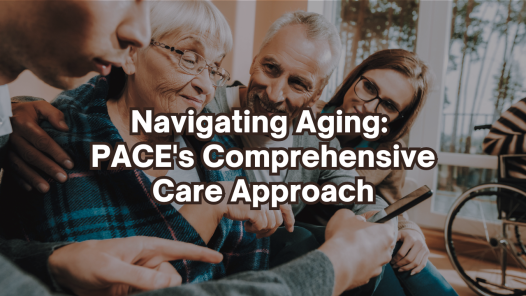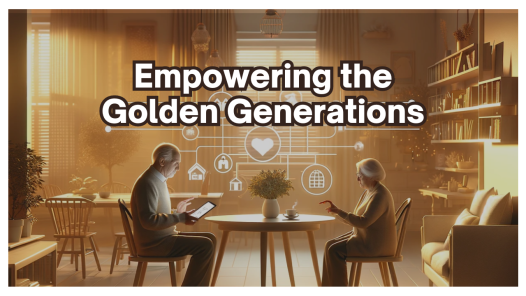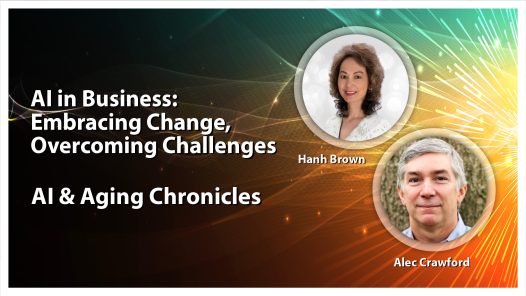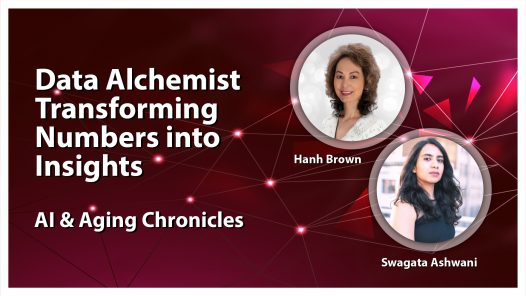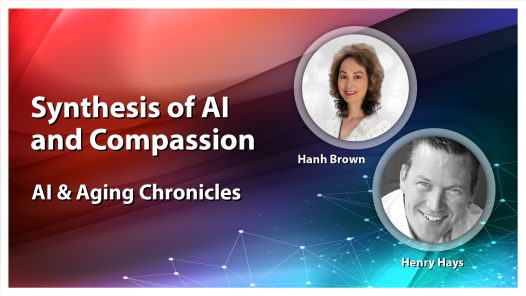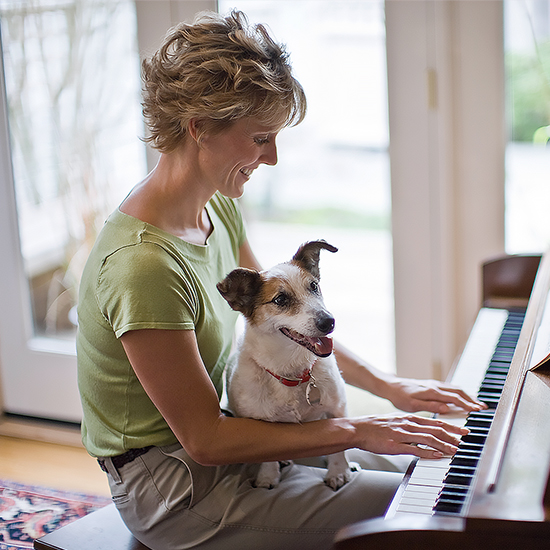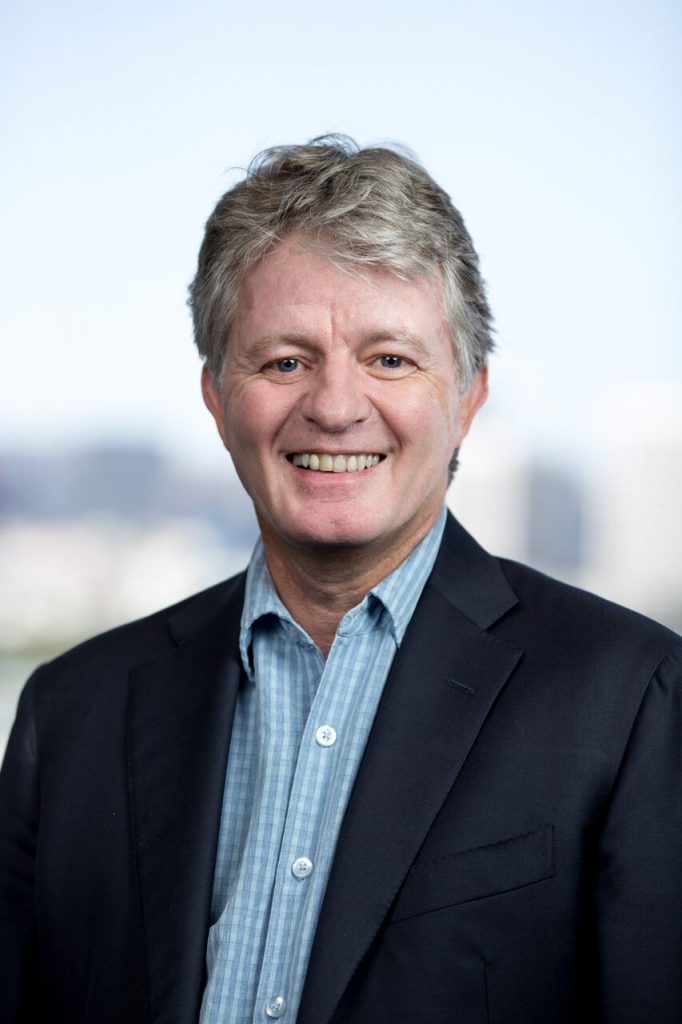
In this episode of Boomer Living, we have Jon Warner – Startup Growth Strategy, Digital Health, and Aging Tech Expert, Entrepreneur, and Author.
We discuss the Aging category (demographically and psychographically). Population health data about the aging sector, Innovation and Technology best practices in health for older adults, Innovation, and Technology best practices in areas other than health for older adults, Gaps in the space, and where entrepreneurs/startups should focus their time and energy, and much more…
[00:00] Pre-intro dialogue[01:41] Introduction
[02:18] Since you’ve had pretty much every role imaginable, how do you think this benefits you and what you’re doing today at Silver Moonshots?
[03:13] What is unique about the aging category, both demographically and psychographically?
[04:12] There are many cohorts within new that age span. How would you break it up, 50 plus to 65? What are the good breaking points?
[06:40] How does population health data help the aging sector move forward?
[07:46] Has this data always been available? What’s the history? Has it always been there?
[08:47] How is the way that we’re learning about health from a population level changing in the last few years?
[10:16] What are some of the best practices for health innovation in technology for older adults that you’ve seen?
[11:20] What do you think, or how do you ensure that the solutions are accessible to older adults who may not be as tech literate?
[12:48] Outside of the realm of health, what are the best practices for innovation and technology solutions aimed at older adults?
[14:18] How can entrepreneurs or startups identify gaps in this space and learn where to prioritize our time and resources?
[17:42] Can you tell us why having a culture of innovation and entrepreneurship is so essential?
[18:59] How can other senior-focused companies develop this culture? Do you have any tips for them?
[20:22] What do you see as the future of digital health and aging tech?
[21:23] We can’t lump cohorts together
[22:59] On a personal level, what do you think is your biggest strength that enables you to have a unique, impactful effect on digital health and aging tech?
[24:21] You worked with a wide gamut of age span; startups, perhaps millennials and the customers, 50 plus. Do you think working closely with this wide group of people has changed you in any way?
[25:25] Do you have any other thoughts that you would like to share?
[26:08] Wrap-up
5-time company CEO, Jon Warner is a widely respected entrepreneurship expert having founded and led 3 startups (with 2 successful exits). Jon’s career started in the corporate world with Air Products and Chemicals, working in the US and across Europe before joining Exxon-Mobil. At Exxon, Jon worked in the UK, the US, Australia, and Nigeria, ending his career there as Deputy CEO.
Following his 15 years in the corporate world, Warner founded and grew a management consulting business-The Worldwide Center for Organizational Development, which had 30 people carrying out a range of strategy assignments for large companies such as Ford Motor Company, L’Oreal, British Airways, HSBC, Microsoft, Glaxo, Foster-Wheeler, Toyota, Johnson and Johnson, Coca-Cola, PWC, The UK NHS, Pfizer, Roche, and MasterCard. Much of this work focused on building an innovative culture and establishing greater internal entrepreneurship skills.
Following his time as a management consultant, Warner was CEO of 2 startups-a digital publishing company and a Bill-pay and payments software platform that operated in the US, UK, and Australia. Since his successful exit from the latter Warner has been working from a California base to mentor and invest in disruptive startup companies, especially in the area of technology deployment in digital health and aging tech in particular. Warner manages the deal flow into a Los Angeles-based Healthcare investment fund-Adaptive Health Capital and is CEO of Silver Moonshots-a research organization and “virtual incubator” for startups focused on health technology and innovation aimed at the 50+ population.
Warner’s career has included senior executive roles in marketing, business development, operations, logistics, finance, investment, human resources, and engineering/technology.
Warner is a noted speaker at businesses and colleges across the world. He is also a prolific author having published 40 books, all concerning business, leadership, innovation, and technology-his latest –‘SLAM’ is a question guide for entrepreneurs.
A native Englishman, Warner moved from the UK to Australia for 15 years before relocating to Los Angeles in 2004. Warner is a graduate of the top 5 Warwick University in the UK, with a double bachelor’s degree in philosophy and politics and an MBA (with a finance specialism). Warner also has a Ph.D. in Psychology (with a specialism in Neuro-science). Warner sits on the Board of St Barnabas, LA’s largest Aging in place non-profit, Is LA Chapter Ambassador for Aging 2.0, and is Co-chair of the annual “Aging into the Future” conference in LA. He is also an Adjunct Professor at Redlands University where he teaches entrepreneurship. He is married to a psychologist, management consultant, and author Anne Sandberg, and has four grown-up children.
CEO Jon Warner – Silver Moonshots: http://silvermoonshots.org/
Reference’s in the interview:
Steve Blank – Professor of Entrepreneurship at Stanford Engineering: https://ecorner.stanford.edu/contributor/steve-blank/
Joseph F. Coughlin – Director, MIT AgeLab: https://agelab.mit.edu/people/joseph-f-coughlin
AgeLab: https://agelab.mit.edu/about-agelab
Transcript:
Jon: 0:00
I think we over obsess about health. It’s a stereotype that says, as you get older, we’re all going to become frail and ill and that all of our needs are healthcare related. And they’re not, of course. We have all sorts of needs. So, I think this comes back to good customer discovery going out and talking to those individuals in the older adult population. However, they might be, broken up in terms of cohorts and understanding those needs. I mentioned transport. I mentioned mobility, but you can go into realms like entertainment, for example, where we don’t routinely render solutions that are unique and specific to their needs. We see a little bit of this in areas like assisted living, where individuals can often afford some of the solutions that are rendered. Where activity planning, for example is something that is rich with software because there’s internet in assisted living and because the access is much higher. So, you see way more innovation in that environment.
Hanh: 1:41
Today John Warner joins me on Boomer Living. John is an expert in startup growth strategy, digital health, and aging tech with roles spanning from marketing to HR, to engineering, to logistics. He’s had a varied career that I’m very eager to learn about it today. He’s currently the CEO of Silver Moonshots. It’s a virtual incubator for startups, focused on health tech and innovation aimed at 50 plus population. John, thank you so much for taking the time to speak with me today on Boomer Living.
Jon: 2:15
Well, I’m very glad to be here, Hanh.
Hanh: 2:17
Thank you. As I mentioned in the intro, you’ve had pretty much every role imaginable at some point in your career. So, how do you think this benefits you and would you be able to do what you’re doing today at Silver Moonshots without all, I guess, without all of these past experiences?
Jon: 2:36
I’ve been very lucky in my career in as much as I’ve had a very broad range of experiences in different functions. I worked in large companies the beginning of my career and worked in different functions within those companies. And then later on worked in startup companies. And of course, you wear multiple hats when you do. And I think that helps just in terms of appreciating what the various roles have to do to make for a successful business. And that’s particularly true in the startup and early stage company world where they’re trying to figure that out. So I think my breadth helps me in, in, in my task in general.
Hanh: 3:12
Thank you. So, what is unique about the aging category, both demographically and psychographically?
Jon: 3:19
Yeah. So, what’s unique, aging is a demographic in the way we think about it. We tend to use big pejorative words very often to describe it. Boomers are clearly one of those words. We use words like seniors. I myself use a word like 50 plus just to go and say, that’s where my focus is. But there’s a problem with that. And it’s on the psychographic side. I think when you use a collective term, you hide the granularity, the color of what’s inside that demographic. And I think that’s something that we need to think about very carefully, particularly in the startup world, because they, those populations are extremely big. If you take my categorization of 50 plus, it’s 120 million people in the us. If you take the senior category, it’s 400 million people in China, for example. These are giant populations of people, and we need to understand them at a much more granular level.
Hanh: 4:11
I agree. There’s many cohorts within new that age span. So, how would you break it up, 50 plus to 65? Help me explain, so that we have an understanding. What are the good breaking points?
Jon: 4:24
So, there’s two really fundamental ones. I think age is one of the curves and I tend to like to do it in five-year increments, would you believe? Because, I really do think that people change quite dramatically. 55 year, not the same as a 50 year old, a 60 year old is not the same as a 55. Think of your own life, w were are you the same? So we don’t make those age categories too big. But it’s only many, one curve of many. There are obviously a whole bunch of psychographic curves and they might be to do with rich and poor or, to do with other factors. It might be to do with frailty, for example which we know changes over time. And it’s different for different people. It’s different on the male side versus the female side. I think the job of the startup is to identify. How to describe the cohort, narrow it down so that they can treat that as perhaps the first market to whom they serve.
Hanh: 5:15
So 50 plus that’s young baby boomers, then the baby boomers and the silent generation. I’m in my mid fifties. I am not the same as I was when I’m 50, and I don’t foresee when I’m 60 or 65 have different expectations and ways of living and perhaps even my adoption of technology. My older siblings who are in their seventies, certainly don’t have the same expectation, likes and dislikes as I do. So, very true.
Jon: 5:45
Yes. And I’ll give you one more example Hanh, if I can. If it depends on what you’re selling. So if we were in the young market, let’s say the teenage market or the children’s market, and we were selling socks, we’d actually want to go down to one year increments because those socks for, one year olds, are not going to be in a fit when they’re two or when they’re four, six. So I think that’s sometimes true in the older adult space. I think we tend to be pejorative and think that a single product will fit everybody. And that’s nice when it does, but it’s very rare. So I think that’s why we have to think about this in more granular ways.
Hanh: 6:20
And you were suggesting five-year window?
Jon: 6:22
That’s how, what I like to use at least on the age side, because I think there’s a, there’s enough in that cohort. That’s unique about the cohort. When you think about it in five-year steps. And we got there a lot of research and we try and do it in five-year increments just to see what the differences are, as people go through those various curves through their age.
Hanh: 6:40
Great. Now, how does population health data help the aging sector move forward?
Jon: 6:45
So, I think it’s critical, like most other industries, other than one, like for example, healthcare. We know a lot about the customer. And we have data in terms of not only how old they are as we’ve just been talking about, but what their lifestyle’s all about. What their preferences are. Where they hang out. I think we need the same in the older adult community. Again, we don’t want to be overly pejorative and population health data therefore needs to be rich because it’s the critical foundation on which we build good solutions. So that data needs to not only look at people through single lenses. “All 65 year olds are like this.”, or even through say a disease state th, this is a person who’s had cancer or heart disease, for example. We should be looking at a whole range of other factors. We often call this social determinants of health. Can they access health capital as one example of that or psychosocial? How do they think about things? Categories of mind in terms of, how they might have one perception as a group over another.
Hanh: 7:46
Now, has this data always been available? What’s the history? Has it always been there?
Jon: 7:51
Hard data is reasonably good, and it’s been getting better in terms of things like health is a good example of that. So, you can go for a medical examination today, and most of that data is recorded in electronic storage devices of some sorts, and then we can recall it very easily. But on the softer side, the softer that data gets the worst it becomes. And I think that’s where we’ve got some work to do. We need to understand the human being in front of us when we’re trying to offer them a solution. And that’s particularly true in health. Because the contextual picture in which people recover from perhaps an illness is really important to that recovery. So, that’s where I feel. We have a challenge on our hands to increase the psycho-social data and the social determinant data in particular.
Hanh: 8:47
Now, how is the way that we’re learning about health from a population level changing in the last few years?
Jon: 8:53
Changing dramatically. And I think one of the reasons is we have the technology now to collect it. Some of that is just the sheer prevalence of the internet. And, there still is something of a digital divide with the older adult community. But nonetheless over 70% of the senior population now are internet savvy. We have these interesting devices, these smart devices that we’re making greater use of. So, of course they’re capable of recording a lot of data. So, I think we’re. With data rich, now. I think we now need to become insight rich. So, I think that’s the next step. It’s so we understand the implications of all of this big data set that we have available to us. And I think it will help us to render solutions that are more effective in the longterm. So, I think it’s one of those areas where I think we need to keep pushing. A good example is COVID in recent times. We’ve been in the midst of pandemic for a year, now, at least in terms of lockdown. I think we’ve seen the good and the bad of that. Yes, we can collect data, certainly at big population health data set level. Who’s contracting this disease? How old are they? Some of those things. But we’ve been quite poor, for example, in terms of getting into the nitty-gritty let’s say by ethnicity. We’ve had to really work hard to get getting that. Or, for example if we go and say, “To what extent does a type-A blood type person have a greater chance of contracting COVID?” We’ve had to dig around in the data way more than we should do. So, that’s where I think we’ve got the challenge in our hands.
Hanh: 10:16
What are some of the best practices for health innovation in technology for older adults that you’ve seen?
Jon: 10:22
Yeah. And that’s a big question because it depends where you look given everything I’ve just said. The more you break up. The giant population of people, 50 million seniors, over 120,000, 50 plus. You’ve got to break up all the technology and the innovation that’s going on and it varies greatly. I do think there’s innovation in the population health field, which I’m excited about. I think there’s a lot of good innovation around food nutrition, and around fitness. On the, and that those two are on the wellness side of things in particular. So I’m very excited by that. And I’m excited by some of the social determinant issues that are being addressed through technology, now. My favorite there would be transport and mobility where Uber like applications now are starting to come into play, to help individuals get to the doctor’s appointments at one level, but perhaps, maybe go and get their drugs or at the pharmacy, or perhaps get some shopping organized when they couldn’t otherwise do it. I think it’s very exciting to see all these possibilities now.
Hanh: 11:20
I guess, what do you think, or how do you ensure that the solutions are accessible to older adults who may not be as tech literate?
Jon: 11:29
Yeah, that’s a really hard issue to to, to deal with. I sit on the board of St. Barnabas in Los Angeles, where most of the population that we serve, and it’s 14,000 of them living on social security. So they have huge access problems. They’re very often Juul Eligibles, and they’re on Medicare and Medicaid. They don’t have a lot of money to throw around, and they certainly aren’t carrying smart devices or have internet in their homes. So, we have to do two things there. Number one is we have to render a solutions that they can use, which often means lower tech, unfortunately. But, otherwise we have to help them. And some of that’s on the education side by giving them the ability to start to use the technology that others are enjoying. It’s a long, slow task in doing it. And we’re making progress slowly but surely. But we still have 30% of seniors on the wrong side of the digital divide. So, we’ve got a lot of work to do. And some of that’s at federal level making internet available, for example, much more ubiquitously, But some of it comes right down to local level.
Hanh: 12:30
Everything that you’re describing, I know there’s a wide demographic that are not literate. And like you said, in the affordable housing with the lower income that don’t have all these smart devices. So, I think as we move forward we have to account for all of those variables. So now, outside of the realm of health, what. Are the best practices for innovation and technology solutions aimed at older adults?
Jon: 12:57
I think that’s interesting because I think we over obsess about health. It’s a stereotype that says, as you get older, we’re all going to become frail and ill and that all of our needs are healthcare related. And they’re not, of course. We have all sorts of needs. So, I think this comes back to good customer discovery. Going out and talking to those individuals in the older adult population, however, they might be broken up in terms of cohorts, and understanding those needs. I mentioned transport. I mentioned mobility, but you can go into realms like entertainment, for example, where we don’t routinely render solutions that are unique and specific to their needs. We see a little bit of this in areas like assisted living, where individuals can often afford some of the solutions that are rendered. Where activity planning, for example is something that is rich with software because there’s internet in assisted living and because the access is much higher. So, you see way more innovation in that environment. But only 1.5% of people live in assisted living or can afford to do so. So, my challenge would be how do we extend that to the rest of the population, the 98.5% that don’t live in those environments? So, it’s certainly not all health. It’s in many other areas. And I think all you have to do is find out what people are challenged by. And that just means talking to them fundamentally.
Hanh: 14:18
Now, health and tech innovation aimed at 50 plus population seemed like a really wide net to cast. So, how can entrepreneurs or startups identify gaps in this space and learn where to prioritize our time and resources?
Jon: 14:33
Yes. And it comes back to (a) having an interest in them, and then (b) engaging in deep customer discovery with them. And this does happen occasionally when individuals have got a parent or grandparent that they suddenly see has got a need. So, most of the people in the aging tech space, I see have had that experience and it’s been a surprise to them. But they’re living with it and they’ve suddenly seen it. I think the challenge is to get more people, to see the challenges in this space, by getting closer to it, by participating more. So this gets back to a topic that’s often these days called multigenerational, intergenerational living. Where we can start to getting, to get people living cheap by jail with other age groups than their own. So, we’ve seen the millennial population, for example, extensively enter the caregiving space. There are 10 million non-professional caregivers now in this space. And I think it’s starting to increase their awareness of all of the issues that entrepreneurship can potentially solve. So, I think that’s exciting, but I think you have to get close. You have to listen, you have to spend time with older adults. And I think on the back of that, you can then render your entrepreneurship, thinking and skills to start developing solutions that I think will ultimately be extremely valuable.
Hanh: 15:48
I agree. I think one way is just to get out there. Survey older adults. Literally get out there. I’m not, hopefully by spring we can be, consistently stay open. In Michigan it’s 50% restaurants and businesses. But as we move in the right direction, I really think it’s just physically getting out in the streets. Asking folks. Taking surveys. So, that’s one of the two do’s that I think will be very exciting and we’re planning to do something like that. So, thank you.
Jon: 16:18
I agree with you, Hanh. And Steve Blank, the professor of entrepreneurship at Stanford calls this, “Getting out of the building”. You don’t innovate or ideate or do entrepreneurship sitting in your office. You’re out there with the customer and talking to them and learning and really figuring out what it’s like to be in their shoes. I very much like, a, Joe Coughlin’s MIT AgeLab for this. Where he’s famous for getting individuals to wear the suit called Agnes which, starts to simulate what it’s like to be older, where you’re perhaps slower moving, carrying a little bit more body weight, not able to see because he puts glasses on that are harder to see through, et cetera. You listen to the people on the other side of those experience and they’re blown away because they just had not appreciated the challenges that were out there.
Hanh: 17:15
I think it’s great. And like you said, many of us, myself included, have our journey with our own parents or grandparents. And we speak, or we see the complexities or complications that they have as they age. So, that’s one way to understand. But I think it’s really important. It’s getting out in the streets, taking surveys online, offline. I think that’s the best way to identify and get it directly from the source. Thank you. Now, throughout your career, you’ve had experience building a culture of innovation and establishing internal entrepreneurship skills. So, can you tell us why having a culture of innovation and entrepreneurship is so essential?
Jon: 17:57
It’s essential. It’s a simple level because change is all around us. We have no choice. The world moves on. The world today is not what it was, five years ago, 10 years ago, 20 years ago. In fact, we go back even 25 years easily within our lifetime, Hanh, we wouldn’t have had smart devices in our hands. We wouldn’t have had the internet 30 years ago in our hands. I think these are skill sets that we all need. And I think innovation is the outcome of having fundamentally a growth mindset, a mindset in which you are learning, you are trying to grow. You’re trying to understand what’s around you because you can take advantage of those new opportunities. I think the more we’re engaged in fixed mindset and resisting change and actually not innovating. I think it makes our world a little smaller, a little colder perhaps. And I think that’s a dangerous place to be. So, I’d like to encourage the reverse. Get people a little bit out of that comfort zone, but just a little bit at a time, so it’s not too scary. And I think if you can do that, I think innovation takes you to really good places.
Hanh: 18:59
Now how can other senior focused companies develop this culture? Do you have any tips for them?
Jon: 19:04
This is really hard. I, you know, I, I talk to companies all the time. Sometimes they have chief innovation officers. So, they’ve taken a step down that path, but that doesn’t mean they funded that position very well or given it much in the way of other resources, in terms of staff, et cetera. And some that don’t at all. I think it comes down to culture and I think it comes from the top. So, what I would say is I think we have to get to the senior leadership and make sure that they themselves have a growth mindset and are acting to encourage others to develop the same. And I think that then builds the culture. Peter Drucker famous. He said culture eats strategy for breakfast. So, I like to start with culture. I think cultures that think to evolve and get people feeling safe, to ideate, safe, to come up with new ideas and not shot down for doing so. And I think that’s got to come from leadership because if leadership doesn’t get that, they’ll drive it underground very quickly. So, I think my biggest tip is to really get the leaders out of their comfort zone so they start buying into this thinking very early.
Hanh: 20:06
I concur with that. Basically, to have a mindset that you’re a student of your customers, and you’re always learning from them. As you learn, you identify and understand what those pain points are what the problems are that you’re trying to, set out to solve. So, thank you. Now, what do you see is the future of digital health and aging tech?
Jon: 20:27
I think it’s a very exciting future. At one level, I think we’ve got a very big population, it’s growing. So it’s it’s a growing population around the world and I think it’s a population that’s living longer. So, I think we’re going to have to ideate and engage in more entrepreneurship and innovation. So, we’ll see a lot more entrepreneurship in this space and I’m excited by that. And I think then the second strand is we’ve got technology, which is evolving very quickly in a number of areas. Just think of AR VR, AI. All of this stuff that’s possible through big data and the data analytics that come from that in terms of new insights, and many others. I think these are possible to deploy in the older adult space. The caveat is we have to understand it. I think what we have to do is really understand our audience at the granular level. We talked about it at the beginning of this conversation. So, I’m excited, but I think we have to make it fit for purpose. And so, that’s the challenge for us.
Hanh: 21:23
Keep in mind that there are many cohorts, right? Within 50 plus, and each of those cohorts have different needs, expectations, likes, and dislikes. I have to remind myself that too. I often speak in terms of older adults. There’s fifties, mid fifties, which is me but then there’s mid seventies, which are my older siblings. So, we can’t lump them together.
Jon: 21:44
Absolutely, we can’t. Most successful startups actually do start with a beachhead market. That’s very narrow. It’s almost paradoxical that you start with a very narrow cohort because you think that can’t be big enough to go and get me to where I need to go. But actually, if you can serve that marketplace, that narrow marketplace that really needs what you’ve got, it becomes a basis to sell to the next cohort and the next. So, that’s the effective learning journey, even with a big company like Facebook today, just to take one example started, in one college Harvard, in this case in the first year and on the male side only. Now that wasn’t necessarily a good thing, but it’s how they tested on honed their product before it became ubiquitous. And today there’s 2 billion plus people on platform.
Hanh: 22:30
I agree. We talk about one cohort is if it’s not big enough, oh it’s big. It’s big, 50 to 55, it is huge. And like you said, that could be your learning ground. And once you establish you move on to the next cohort and to be honest, you can project and you can get out and learn directly. What is it that’s changing between 55 and 60? And leverage the learnings and technology that you already have in place. So, that’s great. Now, on a personal level, what do you think is your biggest strength that enables you to have a unique, impactful effect on digital health and aging tech?
Jon: 23:08
Well, I, I, this is aspirational of me. I think my biggest strength is that I’m just curious minded. I pay attention very broadly to what’s going on in the world of technology and in the world of innovation. Digitalization of the world is happening at zeros and ones right? “Software is eating the world.”, as Marc Andreessen famously said. So, I think my task is to be curious, open-minded, paying attention and then look for applications between one realm and another. I think that’s where there’s opportunity. So, it might be a completely different industry, that’s innovating in some way. We think “Aha”, we can see a possibility in the older adult community that’s different and better, potentially. So, I’d like to read very widely, in my case. I watch a lot of podcasts. I listen to a lot of podcasts, watch a lot of videos on YouTube, et cetera. I enjoy conversations like this in general because it, a, it gets my mind going and it creates a whole network of new people that are talking about issues that matter to me.
Hanh: 24:07
Very true. I enjoyed this conversation too. And I’m so glad that, we connected and allow us to just build on our knowledge and what we don’t know and just hopefully learn and inspire others. So, thank you. Yeah. Now you worked with a wide gamut of age span, right? Startups, perhaps millennials and the customer is, 50 plus. So, do you think working closely with this wide group of people have change you in any way?
Jon: 24:35
Yes, it certainly does. At one level, Hanh, it keeps me young. I’m in my early sixties now as well, and I love working with younger people and by and large, they are. In Silver Moonshots, I run an accelerator. We have six companies coming every quarter, to the accelerator. They’re inevitably either millennials or gen X by and large. I learn a lot from them. They’re paying attention to things that I’m not So, vicariously, I get to see the world through their eyes. And that helps me to understand. And then perhaps I bring a little bit of perspective back to them as well. So, there’s that intergenerational thing working? I think in a practical way.
Hanh: 25:09
I think it’s wonderful to have a perspective of folks fresh out of college, folks who are in their thirties. Each cohort brings a different angle, and they’re all very resourceful and it all needs to be integrated to come up with an optimum solution. Yeah. Do you have any other thoughts that you would like to share?
Jon: 25:28
The one thought I would just go a little deeper on is I’d love to see a lot more entrepreneurs in the older adult space. The boomer population, as we know is, a, very big and it is heading into retirement now at this enormous rate. If AARP is to be believed, 10,000 a day are heading into their retirement years. And I think we’ll have a whole range of needs that I think represent opportunity. Job interest challenge to a whole swath of people. So, pay attention to the older adult community. There’s a lot of fun to be had. A lot of challenge to be had. And I’d like to see more entrepreneurs come into the space, Whatever it takes, pay a little bit more attention to it. It’s a lot of fun.
Hanh: 26:08
I agree. And I also like to see, a, young baby boomers, older adults, themselves become entrepreneurs as a result of this. I think who better yet know what they want and all of that need to be integrated along with, let’s say the startups. So, thank you so much.
Jon: 26:25
Great Hanh. Oh, great to, great to meet you. I look forward to talking on, on email in the meantime. Okay. By now.





